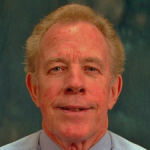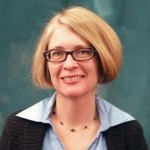Conve ning the Integrated Assessment Modeling team has been important component of my duties in the first year of my rather modest part-time appointment as SRE Resident Scholar. The idea can be traced back to a 1-day workshop of SRE affiliated researchers at the beginning of summer, 2015: perhaps SRE should aspire to developing an Ohio State integrated assessment modeling (IAM) platform that can be applied to a wide range of potential applied studies in sustainability and resilience. Because there are quite a few IAM platforms already up and running, some of them very well known, an Ohio State IAM platform makes sense only if we can leap-frog the competition – that is, recognize the key limitations of existing state of the art IAMs and develop a platform that resolves some of the those issues.
ning the Integrated Assessment Modeling team has been important component of my duties in the first year of my rather modest part-time appointment as SRE Resident Scholar. The idea can be traced back to a 1-day workshop of SRE affiliated researchers at the beginning of summer, 2015: perhaps SRE should aspire to developing an Ohio State integrated assessment modeling (IAM) platform that can be applied to a wide range of potential applied studies in sustainability and resilience. Because there are quite a few IAM platforms already up and running, some of them very well known, an Ohio State IAM platform makes sense only if we can leap-frog the competition – that is, recognize the key limitations of existing state of the art IAMs and develop a platform that resolves some of the those issues.
So we assembled an IAM team – Bhavik Bakshi, Jeff Bielicki, Antonio Conejo, Joseph Fiksel, Elena Irwin, Alan Randall, and Brent Sohngen – and recruited several GRAs willing to work part-time with the IAM team: TJ Ghosh, Nicolas Irwin, Jonathan Ogland-Hand, and Shaohui Tang. First-year tasks included
- IAM modeling: reviewing the state of the art in IAM – objectives, approaches, successes and limitations – with particular attention to recent developments, perhaps generating publishable review articles in the process; deciding on modeling approach(es) that we might pursue; and getting started.
- Taking a leading role in developing two proposals to NSF’s Innovations at the Nexus of Food, Energy and Water Systems, INFEWS, program: on energy systems and CO2, and land-lake implications of food and energy systems in the Maumee Basin.
At the end of Spring semester 2016, we agreed to form sub-groups to pursue four mini-projects, recruiting colleagues as necessary from among SRE’s affiliated researchers:
- LCA-CGE: endogenizing prices and introducing equilibrating features into life cycle assessment models, by integrating Life Cycle Assessment and Computable General Equilibrium modeling
- Land-lake dynamics: making models of land-lake interactions more truly dynamic, with a view to better characterizing the dynamics of ecosystem services production
- Preparation of review article manuscripts: we determined that a comprehensive review article seemed infeasible (several such articles had been published recently, and the field had grown so large that comprehensive review articles were unable to achieve much depth). But there is scope for review manuscripts on two key sets of issues – we will draft manuscripts reviewing and critiquing the state of the art regarding
- Uncertainty and validation in IAMs
- Linking and scaling in IAMs
At our mid-October team meeting we will review progress on these 4 mini-projects.
This brings us to the beginning of SRE’s second year. While the IAM team was doing the things summarized above, much of SRE’s attention was focused on a very successful effort to recruit talented new faculty and post-docs. An important objective for the IAM team in AY 2017 is to integrate newly appointed talent, especially those focused on modeling, into the team’s program. This must be done in the context of several SRE efforts to encourage team-building and networking,
including the topically-oriented networking forums to be introduced in Autumn 2016 and a one-day cross-cutting workshop currently in planning. We expect new interdisciplinary teams and projects to emerge from these activities, changing the landscape in which the IAM team works. In the coming year, we will be focused on finding the IAM team’s place among an expanding group of SRE collaborative activities. Perhaps the IAM Team will evolve and thrive as SRE’s intellectual resources grow rapidly. Perhaps it eventually will be subsumed within other collaborative structures yet to emerge. But either way it will leave its mark on SRE and the larger scholarly enterprise.
 r organizing and facilitating a workshop on Food-Energy-Water Systems at Ohio State last year, Dr. Irwin was interviewed by the National Science Foundation and recognized for her FEWS research efforts. Read the full interview here on the NSF website.
r organizing and facilitating a workshop on Food-Energy-Water Systems at Ohio State last year, Dr. Irwin was interviewed by the National Science Foundation and recognized for her FEWS research efforts. Read the full interview here on the NSF website.